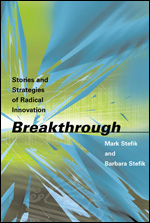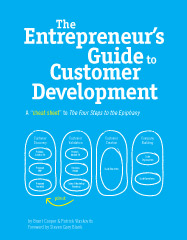 Traffic and parking enforcement is at the heart of running a city. Every day officers drive or walk their beats. They respond to accidents and help citizens. They enforce regulations to keep cities running smoothly like preventing double parking, which clogs streets, or checking residential permits so that people can park near their homes.
Traffic and parking enforcement is at the heart of running a city. Every day officers drive or walk their beats. They respond to accidents and help citizens. They enforce regulations to keep cities running smoothly like preventing double parking, which clogs streets, or checking residential permits so that people can park near their homes.
Our project developing parking solutions is an example of using analytics to help urban authorities understand what is happening in their cities. But what if the crucial information for responding to the needs of a city is not in the database?
[pullquote]The best sensors on the city are the eyes and ears of people.[/pullquote]Think about a parking system in a city today. With analytics, a city can use data from parking meters, street sensors, and citations issued to model their current system performance. But what if, say, pedestrian accidents in the mid-morning are on the rise because impatient drivers are hitting jaywalkers as they drive around double-parked delivery trucks? What if officers assigned to a beat notice that regular enforcement is not needed because a street is blocked off for an undocumented special event? How is a city supposed to capture these observations and redeploy officers to help the city continue its smooth operation? In such cases, the data collected by parking officers themselves is critical. When this information from “human sensors” is added to the system, the ability of any city to see the big picture takes a huge leap forward.
 Our understanding of the real problems of enforcement organizations did not come about sitting back in our research laboratory or just having one-day pain point discussions with customers. As our parking project got underway, we engaged with some of our biggest customers. It started with fieldwork, building a bridge to all the people in the organization. In some cities, we have been on every shift, riding around with officers, sitting with supervisors and dispatchers, and looking for best practices with people at all levels of the organization. We traced the kinds of decisions that the organization makes to operate, review, and plan their activities. We traced the information lifecycle and found that in many cases, the organization did not have the means to collect the information it needed. We ran design sessions with representatives across the organization and found that they had complex choices to make and that often the information was known by somebody in the organization, but that it did not flow to the people who needed it when they needed it.
Our understanding of the real problems of enforcement organizations did not come about sitting back in our research laboratory or just having one-day pain point discussions with customers. As our parking project got underway, we engaged with some of our biggest customers. It started with fieldwork, building a bridge to all the people in the organization. In some cities, we have been on every shift, riding around with officers, sitting with supervisors and dispatchers, and looking for best practices with people at all levels of the organization. We traced the kinds of decisions that the organization makes to operate, review, and plan their activities. We traced the information lifecycle and found that in many cases, the organization did not have the means to collect the information it needed. We ran design sessions with representatives across the organization and found that they had complex choices to make and that often the information was known by somebody in the organization, but that it did not flow to the people who needed it when they needed it.
This was a big “aha” for us and the organization. To see the big picture, we needed more than the data that was being captured already. We needed to tap into the strengths of the organization itself – essentially unlocking the observations of the officers, supervisors, and managers and integrating these into the visual analytics of their workflow. This led to the development of what we think of as “big data + workflow + communications” where just-in-time information pulls from what officers see on the street, and supervisors and managers see across their teams. This learning loop approach is driving the design of a new Xerox solution named CitySight™.
[pullquote]We realized that we could combine the numbers and charts of big data with nuances of human observation and insight. [/pullquote]So as we both bring these new sources of data into the database and improve our predictive models, we advance the ability of the parking authority to better deploy officers and keep its promise of running the city efficiently. And as system services levels and compliance improve, the daily experience of commuters improves, too. We call this “reflective analytics” because it enables a city and a department to see itself and its environment more completely.
Too often the technology industry’s laser focus on processing everything big data misses a critical component: the people involved. In the end, data – even in massive amounts – can only take us so far.
(Reposted from the PARC blog.)




